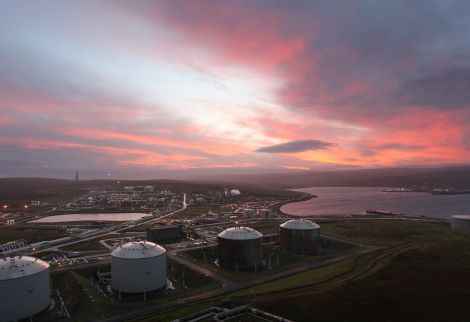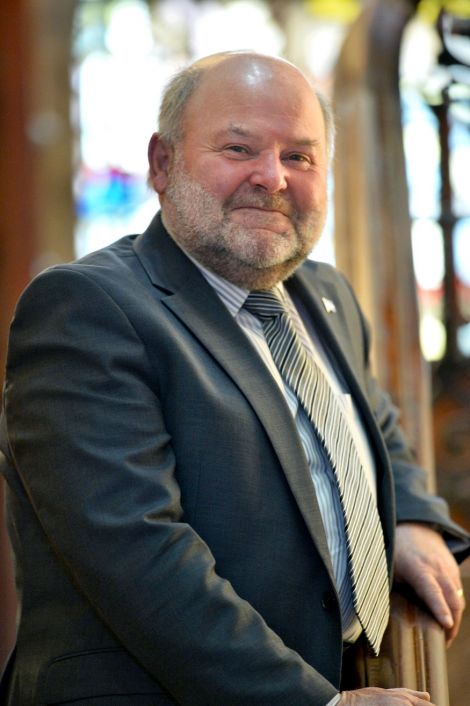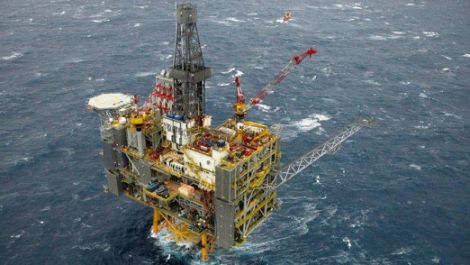News / Oil industry could be here until 2100 – consultant
THE OIL and gas industry is likely to remain in Shetland for the rest of the century, according to a consultant brought in to draw up a “masterplan” for the SIC’s harbour operation at Sullom Voe.
Julian Farrar, of environmental consultants Ironside Farrar, said he suspected the industry “will still be a significant contributor to the Shetland economy throughout the whole of this century”.
He told members of the harbour board that it was important to understand the present energy boom is “not just something that’s going to disappear in a year or two”.
Farrar said oil industry experts already saw the North Sea having a future beyond 2040, but many were now talking about “adding significant periods to that”.
He said back in the 1970s there were estimates of between 9 and 14 billion barrels of oil equivalent in the North Sea, but already 42 billion have been recovered.
Depending on whose figures you trust, there are a further 15-24 billion barrels to recover and “history tells us that they’ve always underestimated the value and duration of these reserves”, Farrar told councillors.
He said the council faced a difficult challenge in deciding how to approach the development of Sella Ness port and harbour: the plethora of operators, contractors and supply chains leads to “dancing around the handbags” as “everybody wants somebody else to be taking the lead”.
The Sullom Voe Terminal consortium, as a result, is “far from nimble” when making decisions, with companies withholding information – leaving the council “chasing shadows, almost, to get an understanding of what all the partners are doing”.
What is not in doubt is the frenetic oil and gas activity taking place in the waters surrounding Shetland – whereas two decades ago the future had been uncertain.
Become a member of Shetland News
BP has invested £4.5 billion to unlock 640 million barrels of oil as part of phase two of the giant Clair field. Along with its partners, BP is also drilling appraisal wells for Clair’s third phase – a development Farrar said could end up being “a multiple bigger than we’re predicting”.
BP also has approval for a £500 million new gas sweetening plant at Sullom Voe, in addition to a £250 million refurbishment of the 35 year old terminal.
Total is investing over £3 billion in the Laggan-Tormore project to tap into huge gas reserves to the west of Shetland, including the under-construction Shetland Gas Plant.
American oil giant Chevron is considering whether to invest potentially £6 billion in developing the Rosebank reservoir, and there has been talk that it may build its own infrastructure in Shetland.
Farrar said it was conceivable that BP’s whole non-operational team could be housed in offices as part of a rebranded Sella Ness “energy park”, rather than within the terminal itself.
Between the harbour, terminal and nearby Scatsta airport, he believes Sullom Voe will enjoy “significant opportunities” as the west of Shetland basin grows and expands – and thinks Sella Ness should be developed as part of an energy hub for oil, gas and renewables.
“Shetland is very well located relative to the west of Shetland, but you are talking about even more arduous conditions in terms of water depth and topography than you are in the east – much of that activity is going to look towards Shetland,” he said.
Harbour board member Alastair Cooper, who has worked with the oil industry for 40 years, said he found Farrar’s masterplan “quite a depressing document, because there’s no spark in it”.
Following a lengthy debate, he asked the consultant to “capture some of what has been said today, and light that candle of hope”.
In the 1970s the council acquired land to confine onshore developments to one particular area, effectively forcing oil companies to work together.
In hindsight Cooper wondered whether the SIC should likewise have acquired land when the Total project came along a few years ago – its failure to do so resulting in the gas plant being built outwith the terminal site.
“We now have other players looking at how they’ll get their product ashore,” he said. “Are we going to allow somebody else to go out past the Total gas plan? That’s the sort of decisions that we need to be taking now, so that we actually direct the developments in the best interests of the Shetland community.
“The big problem we have is that, while it may look on the surface as if the industry wants to work together, the reality is they’re all individuals and they trust no one – dare I say it’s a bit like an independent council!”
Cooper said he felt Shetland was “taking all the risk and getting none of the reward” with offshore loading. “I’m not looking for a hand-out, but I would like a share of the work so that we as a community are getting some of the benefits.”
Councillor Michael Stout said that, being cynical, it felt as if the local authority had been “kept in the dark for longer” about industry intentions, and talked of “a rebalancing of the culture and attitude that we have with the oil industry”.
SIC infrastructure director Maggie Sandison said the council was seeking a meeting with the UK’s Department for Energy and Climate Change (DECC) so it could get a better understanding of BP’s plans for the terminal.
Become a member of Shetland News
Shetland News is asking its many readers to consider paying for membership to get additional features and services: -
- Remove non-local ads;
- Bookmark posts to read later;
- Exclusive curated weekly newsletter;
- Hide membership messages;
- Comments open for discussion.
If you appreciate what we do and feel strongly about impartial local journalism, then please become a member of Shetland News by either making a single payment, or setting up a monthly, quarterly or yearly subscription.






























































